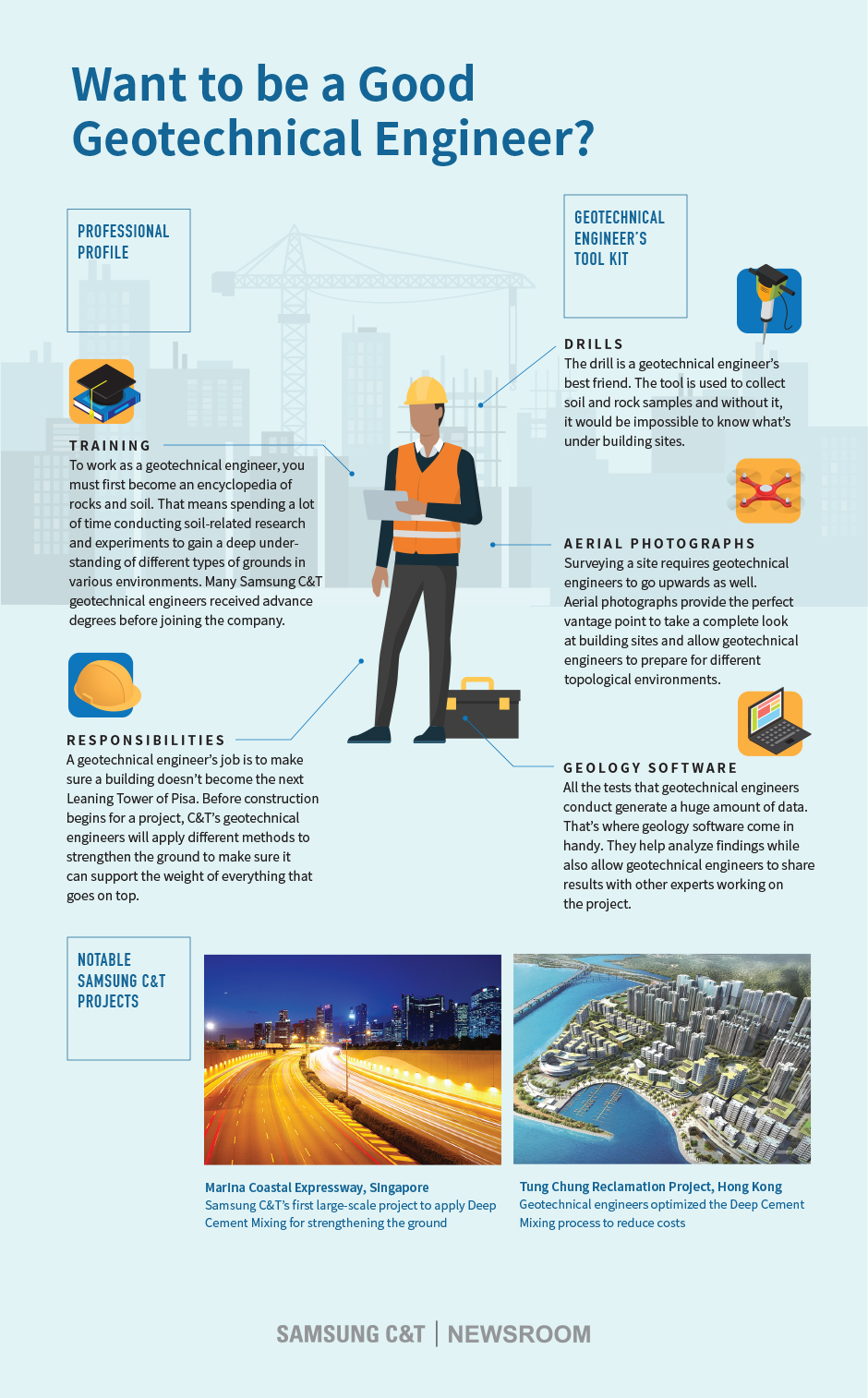The Greatest Guide To Geotheta
The Greatest Guide To Geotheta
Blog Article
Geotheta - Truths
Table of ContentsTop Guidelines Of GeothetaThe Definitive Guide for GeothetaGeotheta - The FactsThe smart Trick of Geotheta That Nobody is Talking About
They team up with civil designers, structural engineers, designers, and other professionals to integrate geotechnical considerations right into the total task design and building procedure. This requires efficient synergy, coordination, and communication to ensure that the geotechnical facets straighten with the task purposes and satisfy regulative requirements.Mining & Materials Design: Principles of drilling, infiltration rates, and factors impacting the choice of boring method. Blowing up methods in surface and underground workings. Mechanical and continuous strategies to fragmentation, including longwall shearing and fullface boring.
Modelling of piece and fragment size circulations; comminution as a transfer feature. Comminution innovation: squashing, grinding, dimension category. Integrated evaluation of fragmentation and comminution procedures. Offered by: Mining & Materials Design.
A Biased View of Geotheta
Bachelor's degree programs in civil, geotechnical, geological, and environmental engineering typically last four years and include general education and learning training courses in English, social scientific research, and the humanities, as well as programs in innovative mathematics, architectural geology, and fluid mineralogy. (https://www.anyflip.com/homepage/zuylo)
Geotechnical design includes the assessment of the soil and rock problems at a particular website, and their ramifications for the advancement of that website. As the majority of frameworks depend on the ground for support, it is without shock that a comprehensive understanding of the ground problems, and the suitability of foundation systems, are essential to the lasting stability and efficiency of the structure or structure.
Being experts in the examination of geological developments and ground behaviour, geotechnical designers execute scientific examinations and testing to comprehend the impact these geological developments might have on the style and building of structure, civil and framework tasks. This expertise is critical for the style and construction of structures, roads, passages, dams, bridges, and water supply and sewer system.
The geotechnical team at Douglas Partners regularly talk to architects, style designers, programmers, and home builders to make referrals on layout and development propositions to ensure that the developed frameworks are suitably created for the ground conditions. The style of footing systems requires to think about the weight of the structure, the ability of the ground to support that weight with each other with movement resistances and effective building.
Little Known Questions About Geotheta.
This job is considerably streamlined by the use of our Douglas Map geospatial system that makes this information readily accessible in a simple to use web internet browser user interface. A geotechnical designer will certainly direct the exploration of boreholes and examination pits to gather soil and various other samples, and additionally examine surface area functions and ground direct exposures to develop a geotechnical version of the subsurface conditions.
Relying on the project kind and ground problems came across, lab testing might amongst various other things examine toughness, compressibility, reactivity and/or permeability of soil and rock samples. After this data is accumulated and collected, the results are used for a geotechnical version of the website, which is generally the original source offered as sections across the site.

A geotechnical investigation by nature can only evaluate the ground problems at the locations pierced or excavated. All-natural variations in dirt and rock problems can happen across a site and in between test locations. It is therefore excellent method that the geotechnical engineer be retained throughout building and construction of the job to offer on-site confirmation that the ground conditions come across are constant with the assumptions and guidance given in the geotechnical investigation report.
10 Simple Techniques For Geotheta
Geotechnical engineers utilize their thorough knowledge of dirt and rock to evaluate danger and solve issues on diverse facilities projectsGeotechnical engineering is a specialist branch of civil engineering which looks at the behaviour of planet materials and the application of soil and rock technicians. Geo Tech Engineer. As a geotechnical designer, you will evaluate the physical, mechanical and chemical residential or commercial properties of dirt and rock in order to create foundations, retaining frameworks and earthworks
Geotechnical design is closely connected to and overlaps with, both design geology and ground engineering - https://www.abnewswire.com/companyname/geotheta.com_139529.html#detail-tab. It's feasible to specialise in geotechnics or benefit a geotechnical company yet be called a design geologist or a ground engineer. As a geotechnical designer, you'll require to: develop and preserve connections with clients and various other experts associated with the website, throughout each projectmaintain security requirements on site be mindful of expense effects when you make recommendationsstudy geological maps and airborne photos from a variety of resources and from different time periodsexamine building prepares to see exactly how feasible they are based on your understanding of the siteinvestigate dangers or geological risks for the sitesearch for eco delicate features, such as land fill beginning to establish factual and interpretive ground modelsplan field investigationsdrill and analyse examples of bedrock, dirt, groundwater and additional materials manage other experts on sitesolve technological problems as they arise, such as unforeseen structures at drill sitesmonitor problems during and after building to make certain frameworks are stable in the short and lengthy termadding data gathered on website to your preliminary researchcreating geotechnical estimations, drawings, and two or three-dimensional computer models translating the datamaking suggestions about the suggested usage of the website

Report this page